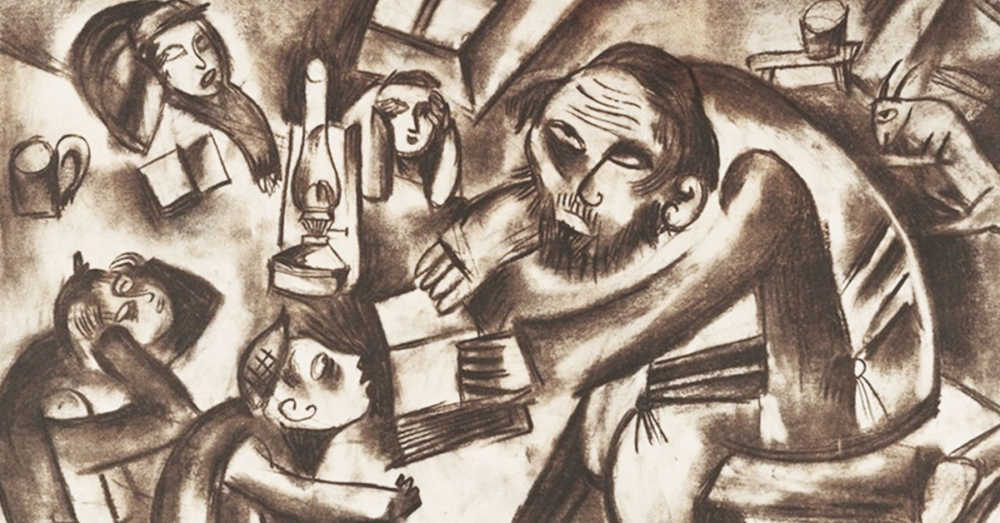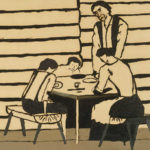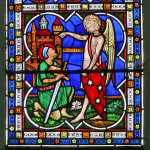We run our website the way we wished the whole internet worked: we provide high quality original content with no ads. We are funded solely by your direct support. Please consider supporting this project.

What to Do If You See God as Violent
God really is as beautiful as he is revealed to be on Calvary. Communicating this is my goal in everything I write—especially Crucifixion of the Warrior God and Cross Vision. But for many, to see him as being that loving, is not easy. We have to make a concerted effort for our brains to adjust to see this revelation of God.
When we are tempted to view God as being violent, I want to suggest four things that can help you make this adjustment.
(1)
Consider the cross as a looking-glass that enables you to discern what else is going on behind the scenes of any violent depiction of God in the Old Testament. The cross fully reveals what God is like, and if you are having trouble seeing how violent portraits of God in the Old Testament point to the cross, then you are at some level assuming that God might be capable of being as violent as these portraits ascribe to him. This means that you are not yet fully trusting that God is fully revealed on the cross. As I argue, the OT authors merely caught “glimpses of truth,” which means that their vision was mostly cloudy.
(2)
If you previously believed that God had a “dark side,” sometimes it will feel like the God revealed on Calvary is “too good to be true.” If that happens, let your imagination enter into the good news! However beautiful you envision God, he is infinitely more beautiful than that! If it feels “too good to be true,” this simply indicates that you are at least moving in the right direction. It just feels “too good to be true” because you have been accustomed to imagining God as “good” even though the God you envisioned was partly ugly. If you continue to place your complete trust in the cross, your habitual association of truth with a partly ugly God will gradually fade.
(3)
When you read about ugly portraits of God in the Bible, remind yourself that this ugliness is a reflection of the ugliness of our sin that Jesus bore on the cross. It is not a direct reflection upon who God is. These ugly pictures are literary testaments to the fact that the heavenly missionary has always been willing to bear the ugly sin of his people and to thereby take on ugly appearances that mirror that sin.
(4)
Even after you believe that God is altogether beautiful and has no non-Christ-like streak in him, it can continue to feel unreal so long as your mental picture of God’s love is abstract and/or foggy. But in Christ, God has given us a vivid, concrete, “flawless expression” of exactly what he is like. I encourage you to ask the Spirit to help you vividly imagine the beautiful, true God revealed in the Son. Take time to surrender your imagination to the Spirit, asking him to help you see God’s perfect, infinitely intense love for you in the eyes of Jesus. Hear God’s perfect, unwavering love for you in words that Jesus tenderly speaks to you. Sense God’s perfect, unsurpassable love for you in the warm embrace of Jesus. (This process is explained more fully in my book Seeing is Believing.)
It may take time, but if you are persistent, you will eventually discern the love of the crucified God in the OT’s portraits of a warrior deity as naturally as you now discern the sin-bearing God-forsaken, crucified Nazarene to be the supreme revelation of God.
—Adapted from Cross Vision, pages 248-251
Category: General
Tags: Cross Vision, Crucifixion of the Warrior God, Cruciform Theology, Non-Violence, OT Violence
Related Reading

Podcast: How Do You Teach a Cruciform Hermeneutic from the Pulpit?
Greg talks about infallibility and inerrancy. http://traffic.libsyn.com/askgregboyd/Episode_0281.mp3

Podcast: Why Must God Wait for Prayer to Meet Our Needs?
Is God a bad father? Greg explores the intricacies and nuances of prayer. http://traffic.libsyn.com/askgregboyd/Episode_0404.mp3

How the Bible is Trustworthy
All of God’s communication in the Scriptures are covenantal in nature. Expressing his covenantal love and faithfulness, God stoops to “breath” Scripture as a means of bearing witness to his covenant relationship with Israel, and then with the Church. Ultimately God “breathed” (2 Tim 3:16) the Scriptures in order to bear witness to the One…

What Do We Do About Violence That Is Already Here? That We Were Born Into?
In this episode Greg Talks About Becoming Non-Violent in a World Soaked in Violence. Episode 30 http://traffic.libsyn.com/askgregboyd/Episode_0030.mp3

Does Following Jesus Rule Out Serving in the Military if a War is Just?
Jesus and Military People Some soldiers responded to the preaching of John the Baptist by asking him what they should do. John gave them some ethical instruction, but, interestingly enough, he didn’t tell them to leave the army (Lk 3:12-13). So too, Jesus praised the faith of a Centurion and healed his servant while not…

A Dialogue with Derek Flood Part 2: Is ALL of the Bible Inspired?
Image by TheRevSteve via Flickr Yesterday, I offered the first part of my response to Flood’s comments regarding my review of his book. Today I’ll finish up my thoughts. Scripture and Its Interpretation Flood confesses that he is confused as to how I can claim that “in the light of Christ, we must reject violent interpretations of Scripture”…
